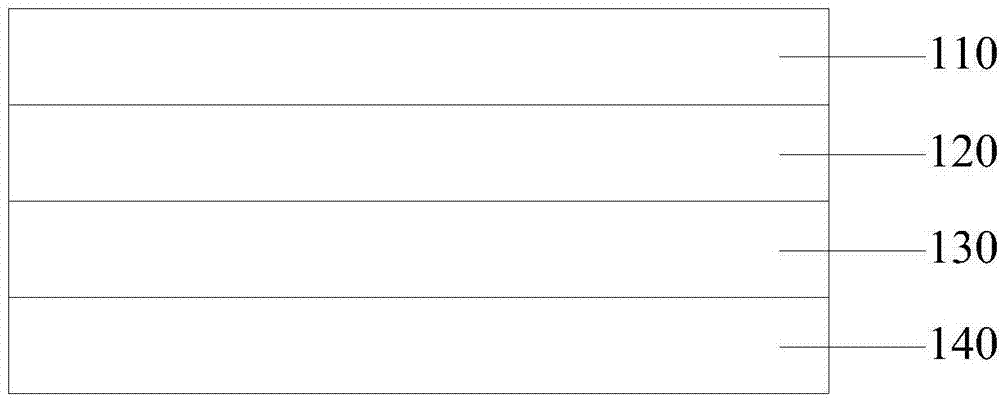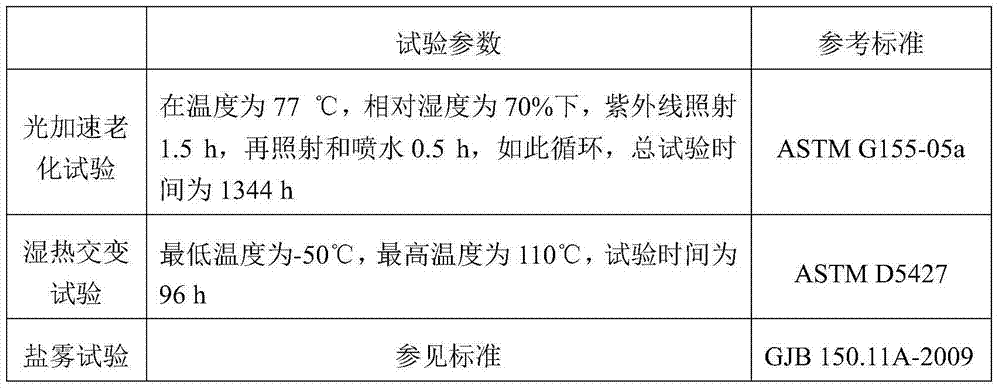Skin of stratospheric aerostat and preparation method thereof
An aerostat and stratosphere technology, applied in chemical instruments and methods, lamination, layered products, etc., can solve the problems of insufficient weather resistance of the stratospheric aerostat skin, and achieve good radiation resistance, high resistance Shear strength, effect of improving weather resistance
- Summary
- Abstract
- Description
- Claims
- Application Information
AI Technical Summary
Problems solved by technology
Method used
Image
Examples
preparation example Construction
[0031] In addition, according to another aspect of the present invention, there is also provided a method for preparing the skin of a stratospheric aerostat, which includes the following steps: the weather-resistant layer, the first gas barrier layer, the bearing layer and the second gas barrier layer Stacked in sequence and hot pressed to form the skin of the stratospheric aerostat.
[0032] According to the above preparation method provided by the present invention, the weather-resistant layer in the skin of the prepared stratospheric aerostat is an ETFE layer. Ethylene-tetrafluoroethylene copolymer (ETFE) has a wide temperature range, between minus 65°C and 150°C, and its embrittlement temperature is as low as minus 100°C, and has good radiation resistance and high Shear strength. Using the ETFE layer as the weather-resistant layer of the skin of the stratospheric aerostat can greatly improve the weather resistance of the skin of the stratospheric aerostat.
[0033] In a ...
Embodiment 1
[0039] Lay the ETFE layer, thermoplastic polyurethane film, aluminized PET layer, thermoplastic polyurethane film, PBO fabric layer, thermoplastic polyurethane film, Tedlar film layer (produced by DuPont) and thermoplastic polyurethane film from bottom to top, heat Press to form the stratospheric aerostat skin. Wherein, the hot pressing temperature is 80° C., and the pressure is 1 mpa.
[0040] In the formed skin of the stratospheric aerostat, the thickness of the ETFE layer is 8 μm, the thickness of the aluminized PET layer is 10 μm, the thickness of the PBO fabric layer is 80 μm, and the thickness of the Tedlar film layer is 10 μm.
Embodiment 2
[0042] Lay the ETFE layer, thermoplastic polyurethane film, aluminized PET layer, thermoplastic polyurethane film, PBO fabric layer, thermoplastic polyurethane film, Tedlar film layer (produced by DuPont) and thermoplastic polyurethane film from bottom to top, heat Press to form the stratospheric aerostat skin. Wherein, the hot pressing temperature is 80° C., and the pressure is 1 mpa.
[0043] In the formed skin of the stratospheric aerostat, the thickness of the ETFE layer is 30 μm, the thickness of the aluminized PET layer is 15 μm, the thickness of the PBO fabric layer is 200 μm, and the thickness of the Tedlar film layer is 10 μm.
PUM
| Property | Measurement | Unit |
|---|---|---|
| thickness | aaaaa | aaaaa |
| thickness | aaaaa | aaaaa |
| thickness | aaaaa | aaaaa |
Abstract
Description
Claims
Application Information
 Login to View More
Login to View More - R&D
- Intellectual Property
- Life Sciences
- Materials
- Tech Scout
- Unparalleled Data Quality
- Higher Quality Content
- 60% Fewer Hallucinations
Browse by: Latest US Patents, China's latest patents, Technical Efficacy Thesaurus, Application Domain, Technology Topic, Popular Technical Reports.
© 2025 PatSnap. All rights reserved.Legal|Privacy policy|Modern Slavery Act Transparency Statement|Sitemap|About US| Contact US: help@patsnap.com



